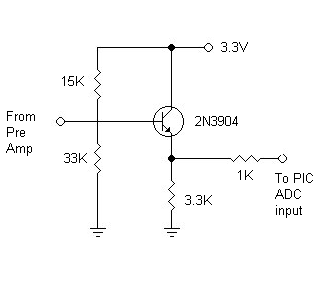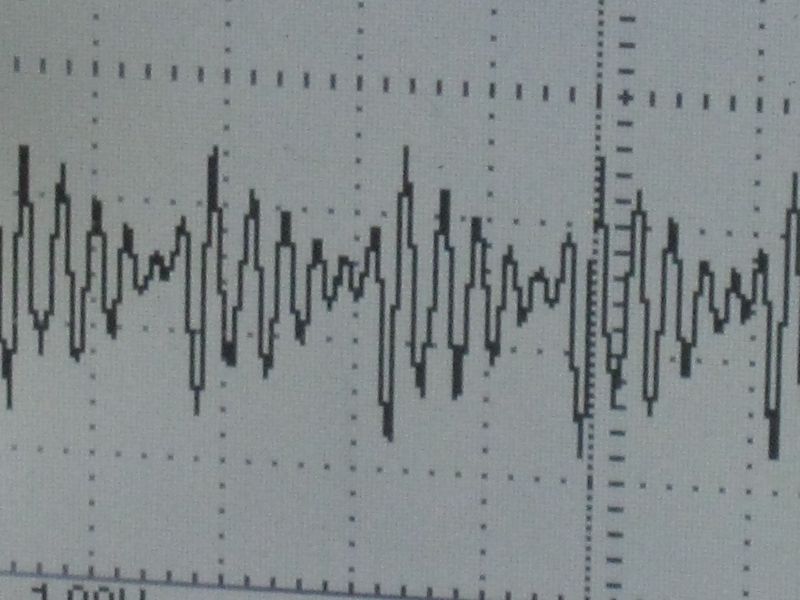
by Dan Peirce B.Sc.
reformatted from dokuwiki July 20, 2013
First test of preamp and level shifting circuit. I also captured about 10 msec of sound (soft "a" vowel sound). Have not added serial eeprom to project yet.
The bias circuit looks like this (except I replaced the 33 Kohm resistor with a 22 Kohm resistor to bring the quiescent point down to about half the 3.3 volt supply).

A pre amp circuit was used in testing:



Application note on serial EEPROM
http://ww1.microchip.com/downloads/en/AppNotes/00966A.pdf AN966 Interfacing SPI Serial EEPROMs to Microchip PICmicro Microcontrollers
Created a private repository for branch of code for the sound project. This way I can have access in different locations but not sharing it since it may be a project for students.

http://ww1.microchip.com/downloads/en/DeviceDoc/21836H.pdf 1 Mbit SPI Bus Serial EEPROM Sould be good for about 16 seconds of sound at 8 KS/s (8 bits per sample) . Cost of $3.40 each if we get 10 or more.
12-Bit A/D Converter with SPI Serial Interface -
http://ww1.microchip.com/downloads/en/DeviceDoc/22248a.pdf
Suggested reading
SPI is as about a simple a serial interface as one can get. The slave devices only need to contain a parallel to serial device and a serial to parallel device. Essentially shift registers.
The LCD we have been using in apsc1299 runs off of 5 volts. Initially I believed we would need a 3.3 volt LCD for phys1600. The adoption of the uUSB- MB5 for physics 1600 probably makes the use of a serial LCD unnecessary (except possibly for stand alone projects). see phys1600_parts.
So far I have found 3.3 volt LCDs (2x16 characters as before) but not with a built in serial interface. Example with a parallel interface http://www.solarbotics.com/product/50410/ Might have to build our own SPI to 8 bit parallel interface with the PIC18F2620.
Found an alternative LCD. It is physically smaller. It runs at 3.3 volts and has a serial four wire input. I think it is worth a closer look. They are only about $11 each from Digikey.
Note that the LCD uses a charge pump. See charge_pump
The world wide public switched telephone network uses digital encoding, 8 bit, 8 k samples/second. The sound quality for quite sounds is improved by using a non linear encoding scheme. Don't think I'd go into that in this course but just pointing out that 8 KHz sampling is adequate for voice.
In the phone system an analog anti-aliasing filter is used before the signal is digitized by a codec in the switch station.
"To carry a typical phone call from a calling party to a called party, the audio sound is digitized at an 8 kHz sample rate using 8-bit pulse code modulation."
See http://www.networkdictionary.com/telecom/pstn.php
http://en.wikipedia.org/wiki/Non-linear_quantization That system is old. Digital cell phones have a better scheme but that makes little difference when connecting to analog phones through the Public Switch Telephone Network.
For land lines the system is generally analog from a persons home to the switch station. Between switching stations the system is digital. At one time the whole system was analogue. Individual calls would be modulated to different frequencies (or "channels) so that many calls could be put on one pair of wires between switching stations. These days the calls are digitized and time division multiplexing is used.
Microchip produces a development board specifically for audio applicatio ns. Note that a 32 bit processor is used.